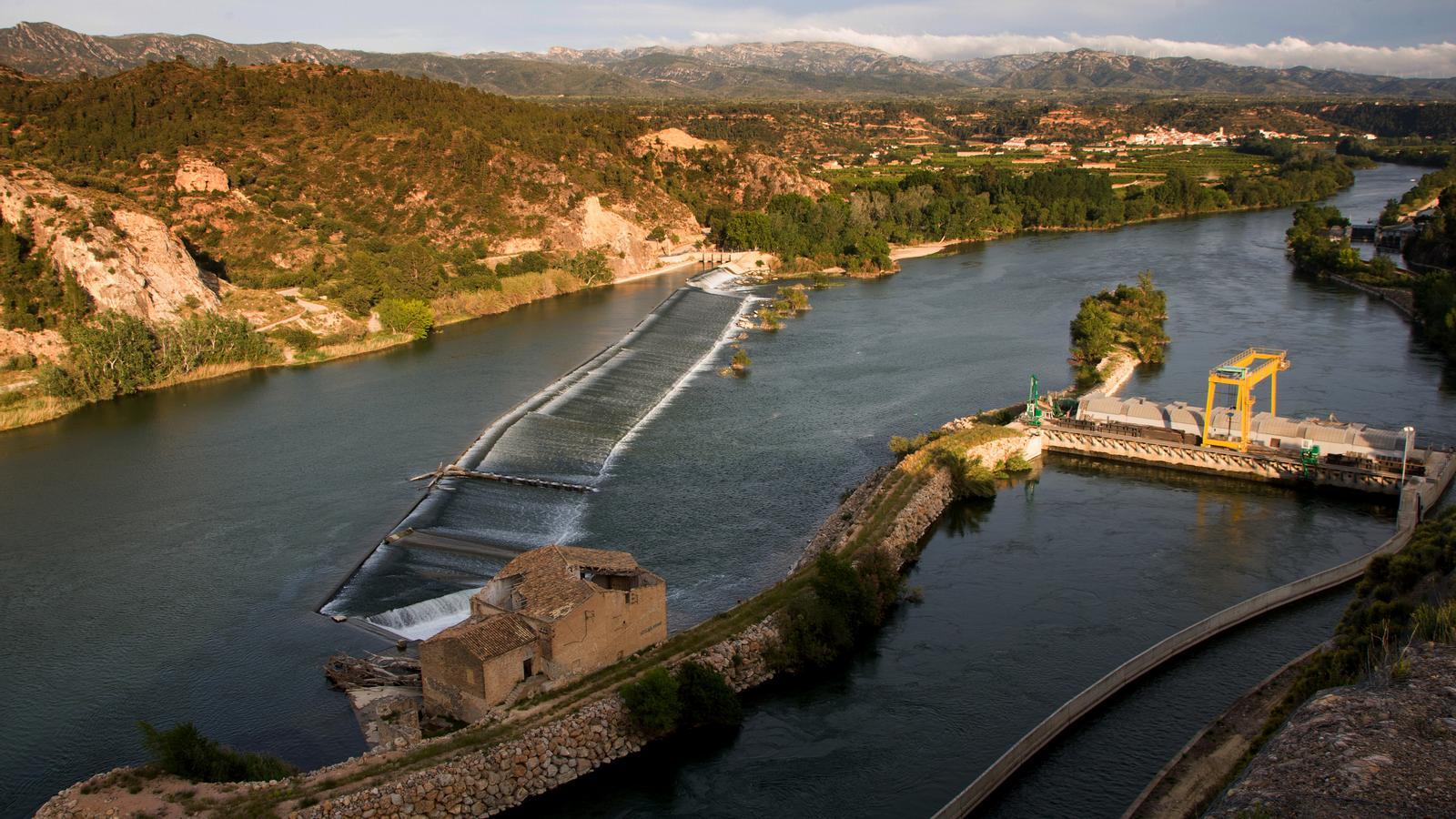"The weir lock was out of service for many years. In the late 1990s, navigation on the Ebro was promoted, a lot of effort was invested in dredging the river—there are shallow areas that didn't allow boats to pass—and then the lock was reopened," explains the mayor of Xerta. Currently, the lock is open during the "good weather" season, especially for "tourist navigation." The lock allows boats to overcome the obstacle of the dam, which is about three meters high. The most frequently used are the canoes, which usually come from Benifallet.
Objective: save the Renaissance flour mill
The Xerta dam


"When I was a child, we used to walk upriver from Xerta to here. It was one of the most common walks. At Easter we would eat mona, and on Thursday, fogasseta (a sandwich made with round bread, filled with tortilla, sausage, artichoke, and spring garlic)." We're standing in front of the Xerta dam, and Roger Aviñó, the town's mayor, recalls some of the good times he spent with family and friends.
Back then, you could go all the way to the mill, which is connected to the weir. But they built a hydroelectric plant, which had a strong visual impact on the entire area surrounding the weir, and access to the mill was cut off for residents. "We mourned a lot," says Roger.
Exceptionally, I was able to enter for this report. Next to the main entrance door (now inaccessible), I read the date of the mill's construction: 1575. I'm surprised that the building of this old stone mill has remained intact for so many centuries. It has withstood great floods (especially those before the construction of the reservoirs that tamed the Ebro). But inside, it's falling apart. We check this out by risking a descent through a side opening, along the different floors. We descend by blurred steps to its heart.
"This mill is one of the few buildings of Renaissance industrial architecture still preserved in Catalonia. It was a flour mill, not a small one. It was a small factory," says Roger.
The mill was built by the city of Tortosa (Xerta was part of Tortosa at the time). It operated using a "revolutionary" technique for its time, the regolf, which was very efficient and produced a good flow of water.
As of 2025, after years of paperwork, it belongs to the Xerta City Council, and will soon dedicate efforts to what is called "consolidating" the structure, that is, ensuring the walls and roof remain standing.
The weir is located at the last point on the river where the mountains on both sides meet. Below the Ebro, we see the plain, and above the Ebro, the terrain is quite winding. We see a now-closed cement factory. The river was an excellent route for transporting cement.
"The mill has been renovated many times. At the end of the 19th century, the building housed a power plant to provide electricity to several villages in the area," says the mayor of Xertolí.
But more than the mill, the most famous feature of this place is the weir. One of its unique features is that it's built diagonally. It measures about 300 meters from one side of the river to the other (if it had been built perpendicular to the river, it would have been somewhat shorter, of course). "Assut" is an Arabic word, but this construction wasn't built during the Arab rule, but later. This doesn't mean that there was any kind of dam during the Arab era.
The weir is a major hydraulic structure built to regulate the river's flow. It currently diverts part of the water into two canals, one on the right and one on the left. "The canals date back to the weir. And they weren't both built at the same time," Roger tells me. "And which one came first?" I ask. "The one on the right was built in 1858. It wasn't originally intended to be used as a irrigation ditch, but rather for navigation. That's why it's quite wide. But it didn't work, and so it was converted into an irrigation canal."
"And when was the one on the left built?" I asked Roger. "Much later, in the 20th century, specifically in 1912," he replied. Both canals are now essential for irrigating the vegetable gardens on both sides of the Ebro and the rice fields in the Delta.
This has traditionally been a coveted spot for fishermen, as the fish are trapped beneath the weir. In the past, sturgeon, among many other species, were caught there. Many foreigners came to fish, until "they ran out." Now there is a fish ramp, which some describe as a toy, as they doubt that many fish will ascend it.
